
The National Oceanic and Atmospheric Administration (NOAA) estimates that more than 700 million gallons of petroleum enter the environment each year, more than half of which is due to irresponsible discharges and illegal disposal. Oil leakage from stern tubes, once considered a part of normal operational consumption of oil by ocean-going vessels, has become an issue of concern and is now considered oil pollution.
The National Oceanic and Atmospheric Administration (NOAA) estimates that more than 700 million gallons of petroleum enter the environment each year, more than half of which is due to irresponsible discharges and illegal disposal. Oil leakage from stern tubes, once considered a part of normal operational consumption of oil by ocean-going vessels, has become an issue of concern and is now considered oil pollution.
In its document EPA 800-R11-002, November 2011, the U.S. Environmental Protection Agency (EPA) references a 2010 study that estimated stern tube leakages and operational discharges of lubricant oils within the world’s 4,708 ports and harbors total 36.9 to 61 million liters (9.7 to 16.1 million gallons) of lubricant oil annually!
In addition to spills and stern tube leakage, continuous low-level discharges are produced by other vessel systems during vessel operations in port. Both deck machinery and submerged equipment can contribute. However systems located below the waterline are a particular problem. Stern tubes and other submerged systems are pressurized to prevent seawater from entering the oil system where it could compromise lubrication effectiveness and equipment reliability. As these systems operate, oil naturally flows into the sea. In this paper we will discuss:
In 2013, the EPA took action to minimize the adverse impact of lubricant discharges on the aquatic environment with its updated Vessel General Permit for Discharges Incidental to the Normal Operation of Vessels (VGP). The EPA VGP provides vessels with “authorization to discharge under the national pollutant discharge elimination system” in compliance with provisions of the U.S. EPA Clean Water Act (CWA).
Under the new VGP regulations, effective December 19, 2013, new vessels 79 feet or longer must use EPA-recognized Environmentally Acceptable Lubricants (EALs) in all oil-to-sea interface applications. Vessels constructed before that date will have to replace mineral oil or other lubricants and adopt EALs in all oil-to-sea interfaces unless technically infeasible.
The 2013 EPA VGP requirements mean, to legally operate in U.S. waters, any deep draft vessel — as well as workboats and other craft covered by the regulations — must replace traditional mineral oil or other non-compliant lubricants with an EPA-defined environmentally acceptable lubricant in oil-to-sea interface applications. Even products described more generally as “environmentally friendly lubricants” must be converted if they do not meet the EPA EAL requirements.
While VGP requirements have changed, marine industry needs for protection and performance have not. Vessel operators must identify compliant lubricant solutions that deliver the same (or better) performance and reliability as traditional lubricants for equipment operating with an oil-to-sea interface.
By EPA definition an “environmentally acceptable lubricant” must be biodegradable, minimally toxic and not bioaccumulative. Because the majority of a lubricant is composed of the base stock, the EPA identifies compliant lubricants by base stock class. As mentioned earlier, the EPA identifies only four classes of lubricants that comply with the 2013 VGP EAL requirements: polyalkylene glycols (PAGs), synthetic esters, vegetable oils, and bio PAOs. Some applications have incorporated non-metallic bearings and are lubricated with seawater. In order for a lubricant to be classified as an EAL it must meet specific EPA qualifications for biodegradability, toxicity and bioaccumulation as follows:
The U.S. Clean Water Act (CWA) regulates discharges of pollutants into U.S waters and the quality standards of surface waters. CWA compliance continues to be a requirement for vessels and other marine equipment operating in U.S. waters.
Under the CWA, a lubricant cannot create a surface sheen on the surface of water in the event of a spill or other discharge. The presence of a visible sheen is one of the criteria for determining if a spill is deemed harmful to public health and welfare and subject to CWA reporting, fines and/or equipment repair and environmental remediation requirements. What’s more, the act states that dispersants, detergents, emulsifiers, chemicals or other substances may not be added to lubricant to remove the appearance of a visible sheen.
Practically speaking, in order for marine operators to avoid CWA compliance issues, a non-sheening EAL should be selected. The EPA 40 CFR 435 Static Sheen Test is an effluent test but it can be used to determine the sheening potential of a lubricant.
While vessel operators, lubricant suppliers and other industry stakeholders must adapt to the environmental performance requirements prescribed by the EPA in the 2013 VGP, lubrication performance must be maintained to ensure equipment is protected and the efficiency, reliability and longevity needs of the marine industry are met.
Efficiency and reliability are especially important in deep draft ocean marine applications to support operator needs for fuel and other operational savings and to avoid unexpected equipment problems that can delay transit and put vessels and crews at risk while on the open sea.
EALs must perform acceptably under the uniquely challenging humidity and water ingress conditions present in oil-to-sea interface applications, while also providing essential anti-wear performance, corrosion protection and a high viscosity index. Reduced friction, high load-bearing capacity and thermal stability are vital to maintain protection across all operating conditions. Oxidative stability is also important, to prevent degradation and formation of sludge or varnish in the system, which can affect change-out intervals and maintenance requirements.
In summary, EALs must meet the industry’s demanding lubrication requirements and EPA regulatory mandates to be useful to marine operators, shipyards and maintenance facilities, and equipment OEMs, as well as to the other business and societal stakeholders who benefit from efficient, reliable and responsible vessel operations.
Lubricants used in oil-to-sea interface applications must be hydrolytically stable and tolerant of water influx. Hydrolytically unstable lubricants can form corrosive acids and insoluble contaminants that can reduce lubricant effectiveness, damage equipment and lead to premature equipment failure. What’s more, polar additives in unstable fluid formulations are attracted to water and can leach from the fluids in the event of water ingress, degrading lubrication performance and further jeopardizing equipment.
Because water ingress is an inevitable threat to lubricants used in submerged applications, purifiers are often used in larger systems — such as stern tubes, controlled pitch propellers and larger Azipods — to spin off insoluble water. However, water ingress must be promptly detected and water removed quickly to prevent damage. All too often, water ingress can remain undetected for extended periods.
In oil-to-sea interface applications, the best way to ensure continuous, effective lubrication and safeguard against costly equipment damage is by choosing a lubricant that is tolerant of water contamination.
Azipod is a registered trademark of ABB
Equipment compatibility is a major concern of any marine operator when assessing alternative lubricant technologies, with seal compatibility usually the predominant concern. Seal failure can cause significant lubricant leakage at the oil-to-sea interface. While damage to seals can be caused by abrasive wear, contact with debris, or during installation, an incompatible lubricant can also cause seal deterioration and subsequent failure.
Data packages provided by EAL suppliers should include test results documenting compatibility with common seal materials. Equipment OEMs may also offer compatibility information as part of equipment technical specifications, or provide the information in response to specific customer requests during the fluid conversion process.
The EPA identifies base-stock chemistries that could be classified as EAL’s — including PAG’s, synthetic esters, and vegetable oils and those materials have now been joined by bio PAO’s. The EPA focused on these materials because they could be made to be readily biodegradable, low in aquatic toxicity, and appreciably non-bioaccumulative. Therefore, choosing from among EAL options should be based on how the lubricants will perform in oil-to-sea interface applications. The following data compares EAL properties and performance against important lubricant selection criteria.
Because they are used at the oil-to-sea interface, the water tolerance of EALs is a primary concern. Water intrusion can break down unstable lubricants, cause corrosion inhibitors to leach out and result in accelerated wear to gears and other components. If the oil repels water and is not circulated, water can accumulate against metal causing corrosion and formation of iron oxides that can become a source of abrasive wear. Figure 1 compares the water limits of EALs as measured using the ASTM D 6304 test method. Note that water soluble PAG lubricants are far more tolerant of water and retain their performance characteristics following water influx better than other EALs. This is because water contamination is solubilized into the PAG-based lubricant. Up to 10% ingress causes no change in the viscosity of water soluble PAG lubricants and there is no change in performance up to the 40,000 ppm or 4.0% upper limit for salt water. Residual salt does not react with the PAG molecule, but should be removed via particulate filtration due to its corrosiveness and abrasiveness.
As vessel owners/operators transition to EALs, ASTM E 203 or another test should be conducted to determine if water is present in the system. A vegetable oil, bio PAO or synthetic ester should not be used if the maximum water content cannot be maintained between 200 to a maximum of 500 ppm.
Fluids that react with water can form corrosive acidic and insoluble contaminants that are potentially harmful to equipment. Ideally, no change in the Total Acid Number (TAN) of either the fluid or the water layer will occur. The Acid Change and Total Acidity Numbers shown in Figure 2, developed using the ASTM D 2619 test method, show that PAG-based lubricants are more hydrolytically stable than other EALs.
Despite the fact that bio PAOs are inert to water, the increased pH in the water layer indicates that additives from the formulation (typically corrosion inhibitors) are being leached from the base stock creating acidity. If the acidic water remains in the cavity, it can cause corrosion and related issues until removed. Meanwhile, the base stock now must function in the absence of critical corrosion inhibitors.
In the case of the synthetic ester, an elevation of +0.83 indicates that the chemistry reacts with water and produces acidic byproducts. The TAN in the water layer also becomes very acidic. As with the bio PAO, this water contaminant should be removed to avoid excessive corrosion and premature wear in the system.
When vegetable oil, synthetic esters or bio PAO lubricants are used in oil-to-sea interface applications, preemptive measures are required to prevent problems caused by water contamination. Reservoirs should be outfitted with available equipment to remove water and filter particulate. Desiccant breather elements should be installed on the reservoirs to remove moisture in the air that would otherwise be breathed into the fluid during normal system function. High-speed centrifuges or vacuum dehydration systems equipped with particulate filtration are used to effectively remove water and the residual salt in larger systems but smaller systems typically operate without any means of water removal equipment.
In dry and cool (100°F or below) operating environments, all EPA listed EALs can provide lubricity and wear performance similar to the petroleum products they replace. However, when catalysts such as combinations of water/heat/wear or metals/debris are present, the results can change dramatically. Wear characteristics of lubricants can be compared using data from mini-traction machine (MTM) testing.
Coefficient of Friction — Figure 3 compares the coefficient of friction for EALs as well as a standard AW mineral oil. Coefficient of Friction (CoF) describes the ratio of the force of friction between two bodies and the force pressing them together, or the slipperiness of two mated surfaces. The curves depict the lubricity imparted by the lubricant. A lower friction coefficient indicates greater lubricity. To simulate real-life conditions, the tests were conducted with neat lubricants and with 10% seawater added.
The data show that the bio PAO and traditional AW hydraulic oil are displaced from the metal surface by saltwater resulting in higher upward sloping CoFs. Long-term repeated exposure to saltwater is expected to leach corrosion inhibiting additives from these fluids. The synthetic ester and vegetable esters interact with the saltwater, reducing their ability to attach to metal surfaces while slightly reducing their CoFs. Long-term repeated exposure to saltwater is expected to deteriorate the esters proportional to the hydrolytic instability of the lubricants.
In contrast to the other EALs, water soluble PAGs interact with saltwater to create a true solution. While the water can displace the water soluble PAG from the metal surface, long-term repeated exposure shows good corrosion resistance because the lubricant holds the majority of the water away from the surface.
Under the U.S. EPA Clean Water Act, a lubricant cannot create a surface sheen on water in the event of a spill or other discharge. Water soluble PAG fluids are the only commercially available lubricants that pass the EPA 40 CFR 435 Static Sheen Test, which means they are the only fluid chemistry that is in full compliance with VGP and U.S. EPA Clean Water Act requirements. Results of Static Sheen testing performed on EAL hydraulic fluids are shown in Figure 4. Water soluble PAGs are heavier than water and water soluble, while other EALs are lighter and insoluble as shown in Figures 5 below and Figure 6 on the following page.
Under 40 CFR 112, the EPA is concerned with soil and water contamination by petroleum oils and substances that behave like petroleum oils. To prevent discharges of oil to navigable waters and adjoining shorelines, the EPA calls for regional inspections to confirm compliance with Spill Prevention, Control, and Countermeasure (SPPC) Plans. SPCC guidance cites the U.S. Coast Guard (USCG) compiled list of substances it considers oils, based upon the CWA definition (33 U.S.C. 1251 — 1376).
Petroleum or non-petroleum “oils” falling under SPCC rules are defined as follows:
While some EALs may fall under these definitions and are, therefore, subject to SPCC rules, AW weight PAG-based fluids are specifically excluded from the definition of an oil because they are polyether materials with CAS# and a molecular weight of approximately 1000. However, PAG-based fluids with viscosities higher than 150 cSt are subject to SPCC rules. The exclusion of lower molecular weight polyethers from classification as petroleum or non-petroleum oils is consistent with the chemical properties that differentiate PAG’s from petroleum oils.
EALs must be compatible with equipment seals to ensure that degradation and subsequent lubricant leakage does not occur. Figure 7 compares the compatibility of EALs with common seal materials. These are general guidelines representing expected results from quality elastomers. A vessel owner or operator should submit representative seals to a prospective EAL supplier to confirm compatibility with the elastomers in actual use. ASTM D Fluid Immersion Properties testing (or similar) should be conducted to confirm percent change in hardness, volume, and weight. The standard allowance for change in volume and hardness at 1000 hours is less than +/- 12% when exposed to fluids less than, or equal to, ISO viscosity grade 46, and +/- 10% when exposed to fluids that have ISO viscosity grades greater than 46. EAL suppliers can provide guidance with respect to the minimum specifications that must be met to assure that elastomers of adequate quality and integrity are used. Use of a higher durometer rated seal (minimum 90) can eliminate concerns about inferior seal quality or other potential issues associated with premature seal failure.
For non-stainless steel hydraulic power unit, piping and reservoirs, EAL compatibility with paints and coatings used on internal system surfaces is an important consideration. EAL manufacturers can provide a list of paints and coatings capable of withstanding interaction with their lubricants. In general, use of primers and acrylics should be avoided in marine environments. Cross linked two-part epoxy paints and coatings are preferred. Example compatibility information is included in Figure 8.
When converting an existing lubricant to an EAL, the goal is always to select an EPA compliant lubricant that will not require a sacrifice in lubrication performance. Choosing a versatile lubricant that can be used in multiple vessel systems can help reduce onboard inventory requirements. EALs are typically more expensive than traditional mineral oil lubricants. To offset this expense, compare lubricant drain interval recommendations to identify a product with extended operating life, which can reduce the overall cost of vessel lubrication, and related maintenance, over time.
To ensure compatibility prior to installation, confirm lubricant seal and system compatibility with equipment OEMs. If multiple lubricants were used when the system was originally assembled, or during operation, address each lubricant during the conversion process.
When draining old lubricant from the system, adhere to all applicable environmental, health and safety practices and regulatory requirements for proper handling, storage, transport, and recycling or disposal of used lubricant. Consult Safety Data Sheets (SDS) and regulatory authorities for guidance. After the old lubricant is removed, prepare the drained system using a procedure that will adequately remove mineral oil from the system before installing the new lubricant. Petroleum oil is soluble and miscible in vegetable oil, polyalphaolefin, and synthetic ester. Any residual hydrocarbon left in the system after it is drained will mix into these EALs and the resulting mixture will be considered a pollutant in the event of a leak or spill into a sensitive waterway.
Therefore, it is critical that a thorough and well thought out drain and flush procedure be used to assure that no petroleum oil remains in the system when the EAL is installed. Because petroleum oil is lighter and insoluble in water-soluble PAG lubricants, any petroleum oil remaining in a reservoir after conversion to a water-based PAG will rise to the surface and can be removed by wet/dry vacuuming the lighter material from the surface until completely removed.
All EAL suppliers should have a method of confirming the amount of petroleum oil left in the system after conversion but the following method is useful when converting to a synthetic ester, vegetable oil or bio PAO. These EALs have different densities than petroleum oil. The approximate percentage of residual petroleum oil can be determined by determining the density of the final charge of fluid in the reservoir, and comparing it to the densities of the neat fluids. The approximate amount of the petroleum oil that remains solubilized into the vegetable oil, synthetic ester or bio PAO fluid can be calculated from this weighted average.
When the fluid conversion has been completed, a control or baseline sample should be pulled and sent to a lab for testing. To obtain a representative sample, pull the sample from the unit after the system has cycled at normal operating pressure and temperature for approximately 1 week. This will allow for any residual petroleum oil in the circuits/lines to make its way back to the tank. In addition, all samples should be pulled while the equipment is operating at normal pressure and temperature to ensure the sample accurately represents the fluid circulating through the system.
Because water soluble PAG lubricants are heavier and insoluble with petroleum oil, a sample can be observed shortly after it is pulled to make a determination if residual petroleum oil exists in the system, and at what approximate percentage. A lab can be used to centrifuge the sample to provide a more accurate measurement if necessary. If petroleum oil exists, it can be removed as described above.
The US EPA’s 2013 VGP mandates require vessel owners and operators to change lubricants used in oil-to-sea interface applications. Selection of an EAL requires careful thought and consideration. Just because EALs are, by definition, biodegradable, minimally toxic and non-bioaccumulative, does not mean they will not all perform acceptably at the oil-to-sea interface. Given the propensity for water/saltwater ingress at any time, end-users should favor the use of the most water tolerant and forgiving lubricants to maintain performance and protection after lubricant conversion. Failure to consider performance before EAL conversion can have a long-term impact on equipment reliability and service life and affect overall vessel operating efficiency, productivity and expense.
American Chemical Technologies, Inc. (ACT) is at the forefront of synthetic lubrication technology. We create, supply, and technically support high performance solutions that extend equipment life, reduce operating expense and help protect the environment. Today, polyalkylene glycol (PAG) and other specialty lubricants from ACT are at work globally, meeting the varnish control/cleanliness, fire resistance, biodegradability, water solubility and other demands of industry leaders in energy, metals, marine, amusement, tunneling, and die casting/forging. ACT is headquartered near Detroit in Fowlerville, Michigan, USA.
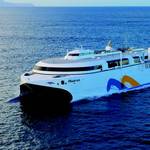
GE Marine is one of the world’s leading manufacturers of marine propulsion products, systems and services including aeroderivative gas turbines. These highly efficient marine engines meet current and future emission regulations, and offer superior availability for various commercial and military applications. GE gas turbine propulsion systems and solutions are being used in some of the most novel projects such as to power the world’s fastest commercial ship as well as the United States Navy’s new LHD amphibious assault ship.
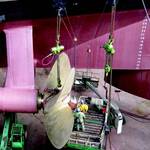
According to Bureau of Labor Statistics, a total of 717 work injuries occurred as a result of contact with objects and equipment in 2013. Roughly, 245 of them were struck by falling objects and another 105 workers were fatally injured after being caught in running equipment or machinery. Needless to say, anything can happen on a jobsite. Your equipment could malfunction or the weather might cause a whirlwind of unexpected issues, or even worse, someone could get hurt. Unfortunately, not much can be done when circumstances such as those arise, which is why developing preventive strategies is crucial to having a successful and safe project. One of those strategies is always choosing safe and reliable lifting equipment. But the question that remains is: is it safer to rent or to buy?
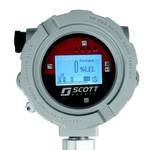
Protecting your people and your physical structure, while ensuring business continuity, are the most important functions of a fixed gas detection solution. Engineering a reliable, high-performance system that makes it easier and more cost effective to meet this challenge is the driving force behind a truly universal approach to gas detection.
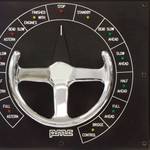
Prime Mover Controls (PMC), based in Burnaby, B.C., Canada, began in 1969 as a small governor service shop, servicing virtually all types of Woodward governors. Over the years, PMC has kept up with new developments in governor technology and has maintained a dedicated and experienced staff of service technicians, as well as extensive test equipment. Servicing and adapting new Woodward governors to a wide variety of applications, both on and offshore, continues to be a significant part of PMC’s business.
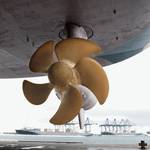
When the Environmental Protection Agency (EPA) issued the new Vessel General Permit (VGP) in December 2013, lubricant and fluid manufacturers were prepared to give vessel owners a number of environmentally acceptable lubricants (EAL) to work with. EAL usage is now essentially required for any application on vessels where incidental lubricant discharge could occur in the marine environment. Those applications include stern tubes, thrusters, stabilizers, CPP propellers, and wire rope and mechanical equipment immersed in water during normal operation.
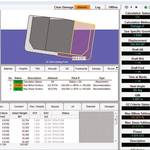
(Herbert-ABS), sets the standard for leading edge stability, load management and emergency response software solutions for the marine and offshore industries. A joint venture between Herbert Engineering Corporation and American Bureau of Shipping, Herbert-ABS supplies quality marine and offshore software products that include LMP-Offshore (offshore load management), CargoMaxTM (shipboard trim, stability and loading) and HECSALVTM (salvage engineering and design). Herbert-ABS is headquartered in San Francisco, with site offices in Glasgow, Singapore, Busan and Shanghai. Herbert-ABS recognizes that success comes from putting their customers first in terms of on-time deliveries, technical excellence and after sales support. The company offers user-friendly software, which is continuously enhanced to meet the needs of the industry.